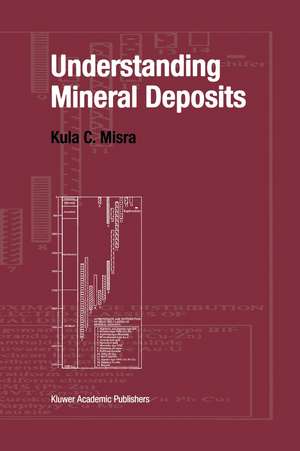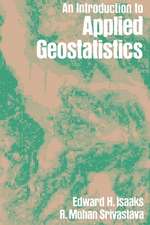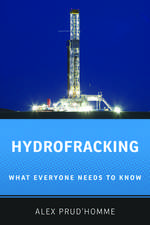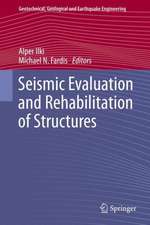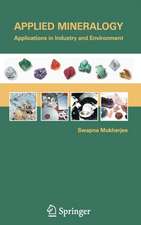Understanding Mineral Deposits
Autor Kula Misraen Limba Engleză Paperback – 13 noi 2012
| Toate formatele și edițiile | Preț | Express |
|---|---|---|
| Paperback (1) | 1094.65 lei 38-44 zile | |
| SPRINGER NETHERLANDS – 13 noi 2012 | 1094.65 lei 38-44 zile | |
| Hardback (1) | 1248.02 lei 6-8 săpt. | |
| SPRINGER NETHERLANDS – 30 noi 1999 | 1248.02 lei 6-8 săpt. |
Preț: 1094.65 lei
Preț vechi: 1440.33 lei
-24% Nou
Puncte Express: 1642
Preț estimativ în valută:
209.45€ • 218.71$ • 172.96£
209.45€ • 218.71$ • 172.96£
Carte tipărită la comandă
Livrare economică 11-17 aprilie
Preluare comenzi: 021 569.72.76
Specificații
ISBN-13: 9789401057523
ISBN-10: 9401057524
Pagini: 884
Ilustrații: XV, 845 p.
Dimensiuni: 155 x 235 x 55 mm
Greutate: 1.4 kg
Ediția:Softcover reprint of the original 1st ed. 2000
Editura: SPRINGER NETHERLANDS
Colecția Springer
Locul publicării:Dordrecht, Netherlands
ISBN-10: 9401057524
Pagini: 884
Ilustrații: XV, 845 p.
Dimensiuni: 155 x 235 x 55 mm
Greutate: 1.4 kg
Ediția:Softcover reprint of the original 1st ed. 2000
Editura: SPRINGER NETHERLANDS
Colecția Springer
Locul publicării:Dordrecht, Netherlands
Public țintă
ResearchCuprins
1. Introduction.- 2. Formation of Mineral Deposits.- 3. Interpretation of Mineral Deposits — I.- 4. Interpretation of Mineral Deposits — II.- 5. Chromite Deposits.- 6. Nickel (-Copper) Sulfide Deposits.- 7. Platinum-Group Element (Pge) Deposits.- 8. Porphyry Deposits.- 9. Skarn Deposits.- 10. Volcanic-Associated Massive Sulfide (VMS) Deposits.- 11. Sediment-Hosted Massive Zinc-Lead Sulfide (SMS) Deposits.- 12. Sediment-Hosted Stratiform Copper (SSC) Deposits.- 13. Mississippi Valley-Type (MVT) Zinc-Lead Deposits.- 14. Uranium Deposits.- 15. Precambrian Iron-Formations.- 16. Gold Deposits.- References.
Recenzii
`However, it should serve as an excellent information resource for professional economic geologists, and for others wishing to become acquainted with a particular deposit type, or method of interpretation.'
Mineralium Deposita, 36:707 (2001)
`The diverse geological settings of metallic ore deposits and the varied methods used in assessing their genesis make writing a comprehensive textbook on ore deposits a formidable challenge. Kula Misra has met that challenge and produced a first-rate book that reviews the techniques employed in ore deposit research and summarize the geological and geochemical characteristics and origins of selected classes of metallic ore deposits. In a field that generates new data daily, Understanding Mineral Deposits is up-to-date useful. With this book he has succeeded in high-lighting the multidimensional nature of economic geology. It is also an excellent reference for professional geologists and a useful txt for senior-or graduate level course in metallic mineral deposits.'
Geotimes, 35 (2000)
Mineralium Deposita, 36:707 (2001)
`The diverse geological settings of metallic ore deposits and the varied methods used in assessing their genesis make writing a comprehensive textbook on ore deposits a formidable challenge. Kula Misra has met that challenge and produced a first-rate book that reviews the techniques employed in ore deposit research and summarize the geological and geochemical characteristics and origins of selected classes of metallic ore deposits. In a field that generates new data daily, Understanding Mineral Deposits is up-to-date useful. With this book he has succeeded in high-lighting the multidimensional nature of economic geology. It is also an excellent reference for professional geologists and a useful txt for senior-or graduate level course in metallic mineral deposits.'
Geotimes, 35 (2000)
